You’ve probably heard of a 50mm lens called a “nifty fifty.” And for good reason!
You may be asking, “What is a 50 mm lens good for?” In this article, we are going to run through what a 50mm standard lens is and why it’s awesome.

Every single lens is split into two groups—zoom lenses and prime lenses. No matter if you are using a wide angle, standard, or telephoto lens, they either have a fixed focal length or they don’t.
A prime lens is one with a fixed focal length, such as the infamous Canon EF 50 mm f/1.4 lens. A zoom lens has an array of different focal lengths, such as the Canon EF 24-70 mm f/2.8L II.
For more information on prime lenses vs zoom lenses, read our extensive article here. When first starting out in photography, having the flexibility of a zoom can be very helpful and feels a lot safer, but it also has many disadvantages.
The only good thing about a kit zoom is its optical range. In essence, you get a modest wide-angle with a normal 50mm lens and a moderate telephoto lens all in one.
As you build your confidence as a photographer at least one prime lens should be in your camera bag. I think the 50mm prime lens is the obvious choice.
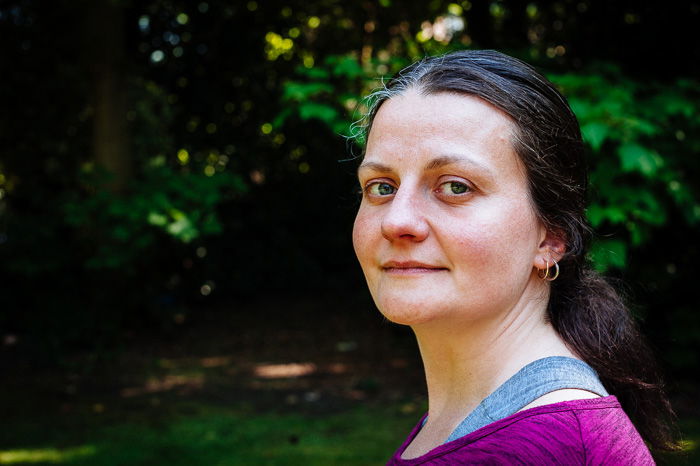
As you can see the background is still distinguishable and is quite distracting. This is the best-case scenario at about 1.5 ft distance from the subject.
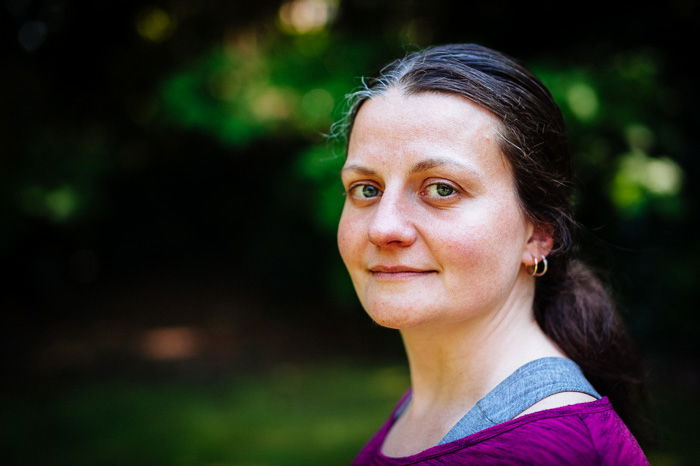
Even at 1.8 you can see the trees and foliage melt away into a beautiful abstract background. You have to be careful to get your focus point right though, as you can see the more distant eye is out of focus. You need to make the nearer eye the focus point.
The 50mm ‘nifty fifty’ lens gives the most flexibility to your photography and is probably the easiest focal length to frame well.
Many professionals would choose one of the 50mm lenses if it was the only lens they could carry.
The 50mm prime lenses are probably the most useful and complete all-round lenses you could buy. Before the advent of zooms, most cameras were fitted with 50mm lenses.
In fact, possibly the most famous photographer ever, Henri Cartier-Bresson, used the 50mm lens for most of his photography.
Here are 8 reasons why you should have the 50mm prime lens in your bag!
Ironically, not having the flexibility of a zoom, rather than limit your photography, will over time enhance and improve your composition.
‘How can this be?’ you may ask. ‘I can go from wide angle to short telephoto with one twist of my kit zoom!’.
With 50mm prime lenses, instead of zooming with your hand, you will zoom with your feet.
You’ll get closer to your subject to isolate it from a distracting background, which will mostly be abstract shapes (especially if you have the f/1.4 version).
You’ll also learn to step back from your subject to add context. After a while, you’ll be able to pre-visualise the image before you put your camera to your eye.
You’ll know what the scene will look like through a 50mm field of view.
And without the temptation to zoom, you’ll become more adventurous with your framing. You will learn to compose with the scene that is in front of you!
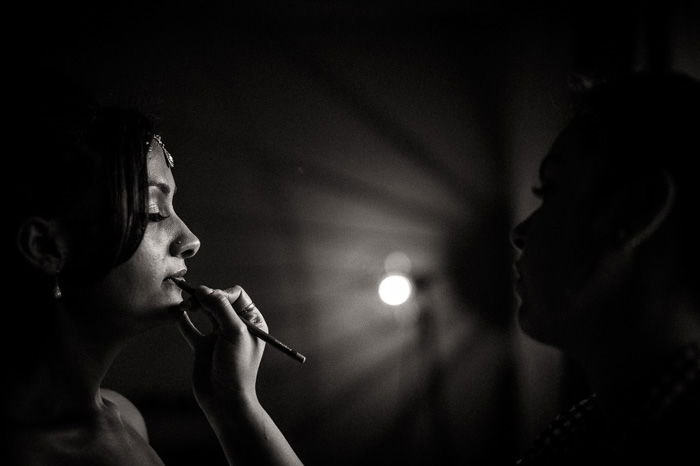
What? No flash? That pop-up flash on your camera is a real atmosphere killer. If you want subtle, natural light, you need your trusty nifty fifty!
If you are primarily working in low light, read this tutorial to learn how to capture great photos in low light.
With even modest 1.8 50mm prime lenses, you will be able to shoot indoors without a flash. The faster the aperture of a lens, the higher the available shutter speed is at any ISO.
A difficult-to-take portrait photograph at 1/15 seconds at f/5.6 (the usual aperture at the long end of your kit lens) becomes a comfortable 1/140 at f/1.8!
Most basic DSLR’s have a limited ISO range, so having the fast aperture ensures you can shoot in the lower range of ISO indoors, while providing a high shutter speed.
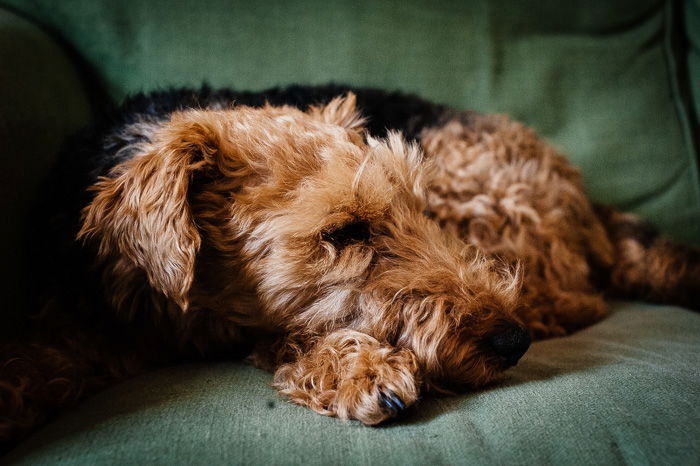
At extended ISO on my D700, the image is really noisy. A basic cropped sensor DSLR will be really noisy at this ISO if it reaches this high at all.
This is right by the window too, and again you can still see the background.

With a 50mm prime, at a relatively low ISO, we can focus on Frida’s cute little face as the background became soft and smooth.
Knowing when to use 50mm lens is half the battle. Bokeh is just one example of the endless possibilities. This is because the faster the aperture, the shallower the depth of field becomes.
What this means for your images is real isolation of your subject from its surroundings and beautiful bokeh–blurred backgrounds or foregrounds.
50mm photography utilising a wide aperture will create very attractive bokeh, resulting in images that will look way more professional and atmospheric!
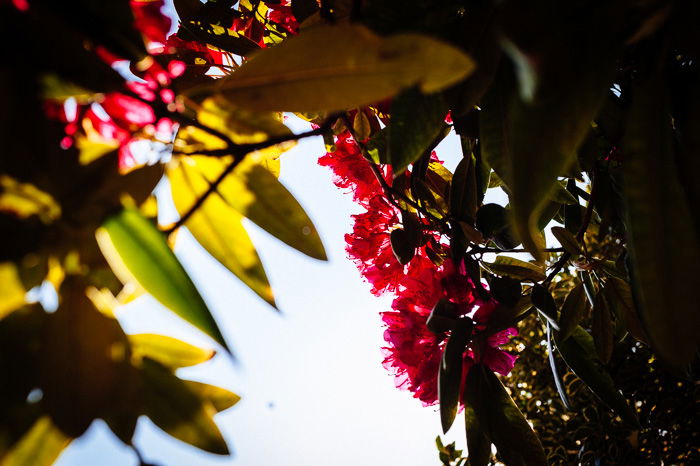
As they are a large part of the frame, the leaves in the foreground compete for our attention.
It is less obvious that the flowers are the intended subject, and our eyes will flick between the two competing elements.
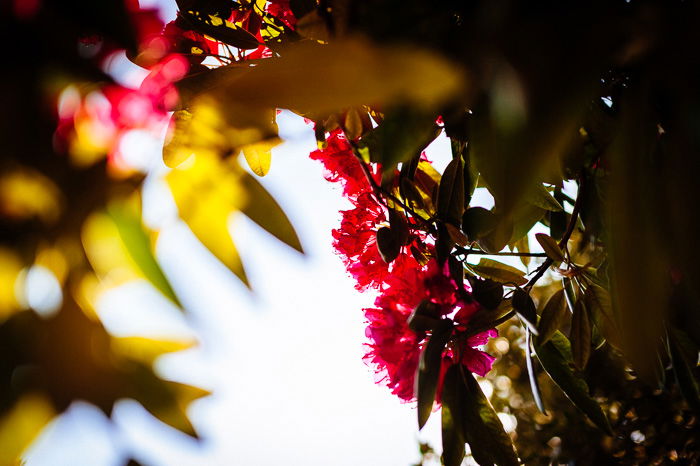
When your foreground or background is out of focus (especially at f/1.4), your subject will have a greater impact within your composition.
The out-of-focus elements aid the composition (rather than causing distractions), as the eyes focus on the subject in focus. It’s also a lot more pleasing to the eye!
Even at its maximum aperture of f/1.8, the 50mm prime lens is much sharper than your kit lens. Stopped down to a smaller aperture like f/4 and you are talking tack-sharp!
The standard f/1.8, 50mm prime lens is smaller and lighter than your kit zoom, which means carrying it around all day is a breeze!
Using a fast prime lens allows you to take a different attitude to your 50mm photography.
Rather than orchestrating a photograph, you can develop a more candid style and capture your friends and family quietly and unobtrusively.
Even your dinky kit zoom let’s people know you are there, as they usually extend when zooming in, making you more noticeable. And it can be intimidating to some of your shyer subjects.
With the small nifty fifty, you’ll be less obvious and better able to capture that great moment without being noticed or altering the mood!
All you need now is your stealth suit!
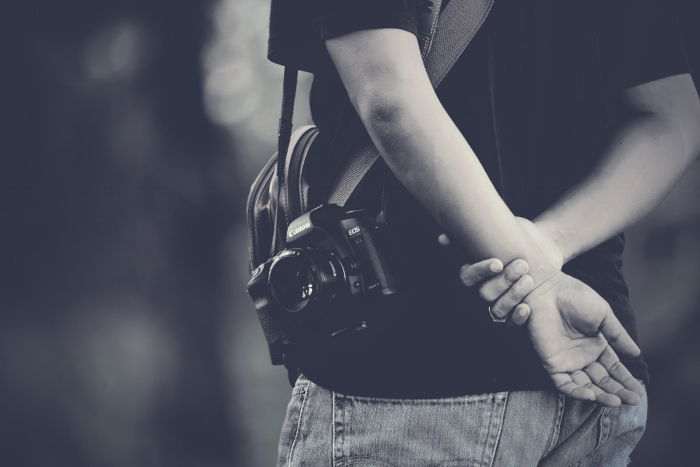
On a full frame camera, the field of view of your trusty 50mm prime lens looks very similar to how we see with the human eye.
If you put your open hands at the side of your head like side blinders, the edge of your hands is the limit to the frame on a 50mm lens.
The magnification is literally the same. So what you see is what you get with the 50mm photography. What this means is…

With the beautiful shallow depth of field you can get fantastic, naturally lit portraits that will look more like the professional images you see on the web.
If you are a portrait photographer, here are some tips for taking interesting portraits.
You can also use your 50mm for tighter framed landscapes; you don’t always want a wide angle for this type of shot.
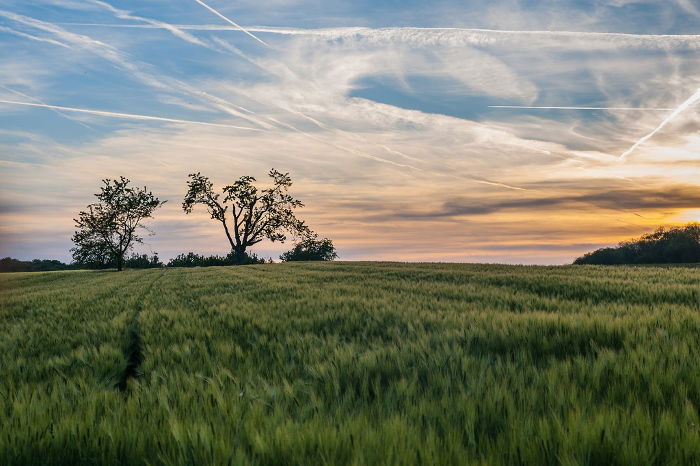
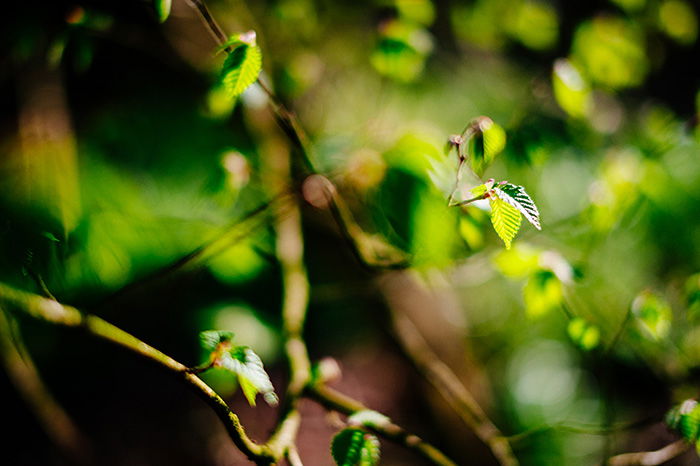
At f1.4, backgrounds become pure abstract shape and color. This helps you become more adventurous with your composition.
This image has only the two small leaves on the right in focus, but still works as the background is just a beautiful wash of color and shape.
50mm prime lenses are also great for street photography lens. Since the field of view mimics our eye it’s a great lens to learn street photography with.
And with the wide aperture, you will be able to shoot in streetlight!
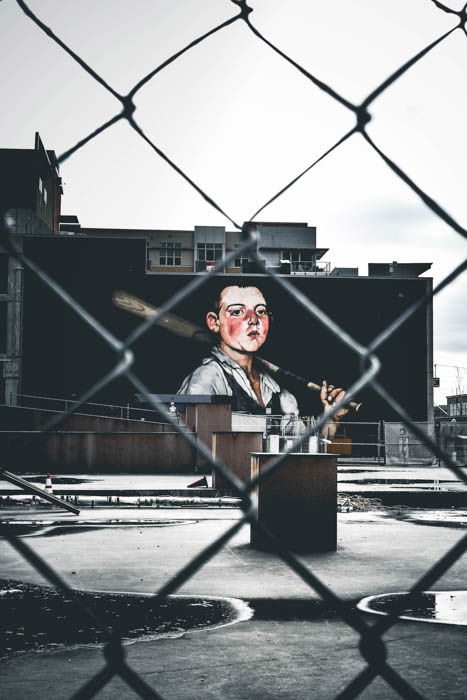
The Nikon 50mm 1.8G is relatively cheap. You can also still buy the Nikon 50mm 1.8D, for a less-expensive alternative.
If you are willing to buy second-hand or refurbished, you can pick up the old 50mm lens for almost half the price of a new 1.8G.
So you don’t have to fill your piggy bank for very long to get one!
I hope I’ve convinced you to take the plunge and grab yourself the most used lens and focal length of all time!
The 50mm prime lens has a character all of it’s own and it makes for a unique photography experience — shooting could even become a real adventure!
We have a great new article on how to shoot with an anamorphic lens to check out too!
